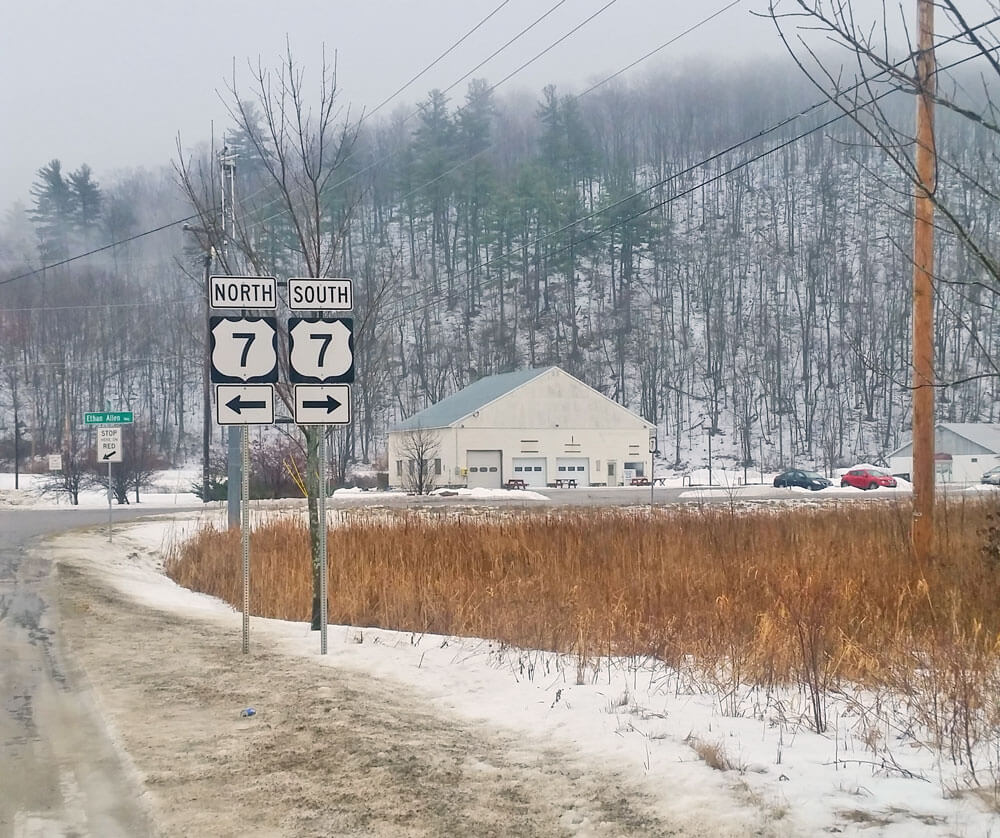Where does the town stand in regard to a new Maplefields?

At this point, process is what will produce the product. The process is town governance. The product will be what will stand at the intersection of Route 7 and Church Hill and Ferry Road.
The first step in the process occurred last fall with a sketch plan hearing for a Maplefields gas and convenience store on the site.
The site has lain vacant for several years and is an important hub in the Route 7 corridor. The sketch plan hearing with the town’s Planning Commission suggested that whatever structure is designed should conform with Charlotte’s other buildings—i.e., it should not stand out as a multi-storied, modern-looking store. Rather it should follow central village structures such as the town library, town hall and senior center.
According to David Marshall of Civil Engineering Associates, the architect will take this suggestion into consideration before the proposed site plan goes through the Zoning Board’s conditional use permit process, then on to the Planning Commission for a hearing later this year. Out of that hearing should come the town’s feelings about the developer going ahead with the project.
Meanwhile a good number of town residents (145 at last count, according to Rebecca Foster) have raised questions regarding what such a project would do to the area. These people signed a letter to the Selectboard, Planning Commission and Zoning Board, expressing a number of concerns about the project as they see it currently.
They begin by saying that they “wholeheartedly support the revitalization of the corner of Church Hill Road and Route 7” but go on to say why they feel it needs to be done with extreme care. Concerns range from traffic-safety implications to the variety of products that are sold or services that are rendered. They feel that it ought to be a store that primarily answers the needs of Charlotte residents. They have special concerns about permitted and nonpermitted uses of the store’s space. They are also concerned about what the project would do to the nature of the main roads running past it. Considering Route 7 to be protected as a “scenic travel corridor,” they are afraid that the commercial space may detract from that designation.
The letter contains a number of more specific concerns as well, such as the area being shown up at night by light canopies, space being made available for truck parking or stopping that would “enable them to linger.” They do not wish to see a fast food restaurant nor permission granted to use the town’s wastewater resources if those of the business fail.
The developers, however, plan to move ahead with a design that, most likely, will have a colonial flavor that they believe fits into the Charlotte town character. The Zoning Board will attempt to measure the project’s impact on the community before it gets back before Planning Commission for a hearing.
The Maplefields project will test both a developer’s ability to add a significant commercial element to the town and the ability of the community through its human resources to provide input into what the future holds for Charlotte.
We have been a community of varied major elements over the past several decades. We grew from a primarily agricultural community to one testing the town’s ability to plan diversity. Given the expanse of the land and many farmers’ needs to use their property to produce income coupled with a desire by interested homebuyers to be close to Burlington yet simultaneously in a village with limited commercial structures, the need for an active town government system becomes crucial. This project sees Charlotte facing another challenge to determine its future character and whether it can remain distinctive.
